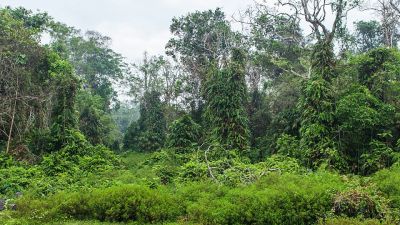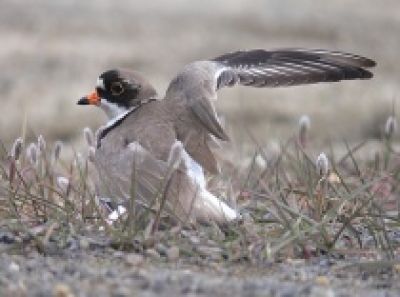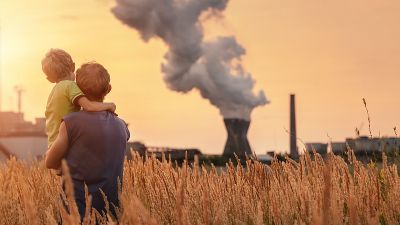“We really had no idea how big a role the Aborigines played in shaping the landscape in Australia before,” says Petr Kuneš, an associate professor at CU’s Department of Botany. Dr. Kuneš was a member of an international team whose research examined how British colonisation changed vegetation management from the Indigenous Australians, ultimately transforming the landscape itself. The team found that, colonisation together with climate change in this century created conditions for the uncontrollable wildfires seen in Australia today; the results, which have been getting a lot of attention, were published in Frontiers in Ecology and the Environment on 15 February.


Conducting research in Tasmania. Photos by Petr Kuneš.
Paleoecological modelling
“The pollination of trees and plants in Australia largely depends on insects, whereas in our European environment, tree pollen is usually transported by the wind. Previous models were not calibrated to the specificities of Australian tree species, which significantly affected (and led to a distortion of) the results of earlier analyses,” explains Petr Kuneš. In response, the authors of the new study used a method of cutting-edge paleoecological modelling of pollen dispersal, combined with analysis of current vegetation cover and plant macro remains, to create a more accurate picture.

Graph: From the study Disruption of cultural burning promotes shrub encroachment and unprecedented wildfires.
The team found that prior to the arrival of colonists in the 18th century, south-eastern Australia was dominated by grasses and forbs [a herbaceous flowering plant – ed. note] (at 51 percent), together with scattered trees (15 percent), and shrubs comprising approximately one-third of the vegetation (34 percent). The findings lined up with historical sources describing Australia’s historical landscape. The data also confirmed that frequent low-intensity burning was used often by Indigenous Australians as a form of vegetation management: while controlled burning was common, fires were not extensive in scale and were fuelled primarily by the herbaceous understory. However, after colonisation that would change.
Modern fires burn through bark and undergrowth
With the arrival of European colonists in the late 18th century, open habitats in the lowlands - suitable for agricultural use - were initially burned extensively. Tree vegetation was reduced. “When fire was subsequently abandoned in the landscape altogether, this resulted in a significant increase in shrubs in inaccessible forest areas and a build-up of potentially flammable biomass in the dense undergrowth. Fires were able to spread much more easily,” Dr. Kuneš explains. “Many Australian tree species are pyrophilous - adapted to fire and burned substrata - but they are only adapted to low-intensity fires, which quickly changed. Increasing the density of the shrub understorey, along with the accumulation of bark peeling off eucalypts,” says Kuneš, resulted in “eucalypts effectively igniting themselves”. And while native inhabitants regulated the amount of combustible biomass by periodically burning the understory, later fires were fed by the dense understory and accumulated bark. Today, that has led to wildfires being far hotter and harder to regulate or get under control when they quickly spread.
Both humans and global change are to blame
Dr. Kuneš says it is important to recognise that the accumulation of combustible biomass and increased connectivity in south-eastern Australia goes hand in hand with global climate change. In recent decades, this has had a significant impact on temperature oscillations and wind patterns on which local weather patterns depend. “This is leading to changes in rainfall distribution and more frequent occurrence of warm, dry and windy weather, which encourages the spread of wildfires and makes them more difficult to control,” the palaeoecologist explains.
What surprised the scientists most about the research? “We really had no idea how great a role the Aboriginal Australians played in shaping the landscape of the time. It was - as the research showed - very significant. We now know that the increase in the number of fires in the last two hundred years is the result of the abandonment of traditional land management,” he says. With a smile, he hints that there is much more related research to come. “We have got a number of projects studying fire dynamics underway. Another big one is currently finishing in the Šumava Mts in Czechia. There, we are interested in the relationship between fires and other ecosystem disturbances, such as bark beetle infestation and ongoing climate change.” But scientists are also expanding elsewhere in Europe, where - as the botanist Petr Kuneš expects - the topic of fire occurrence is becoming increasingly relevant.
| Associate Professor Petr Kuneš |
| Petr Kuneš graduated in biology at the Faculty of Science of Charles University and received his Ph. D. from the Department of Botany with a focus on the paleoecology of vegetation in the Late Glacial and Early Holocene (2008). Until 2011, he was a postdoctoral fellow at the Department for Geoscience, Aarhus University. He is interested in Quaternary paleoecology, linking ecology with other disciplines - e.g. archaeology, climatology, geology - at different time scales. “I like to study the long-term dynamics of ecosystems and environments, succession driven by natural and anthropogenic disturbances and compare the results with contemporary processes,” the paleo ecologist says. |



















